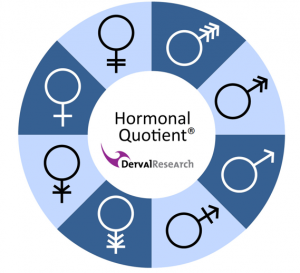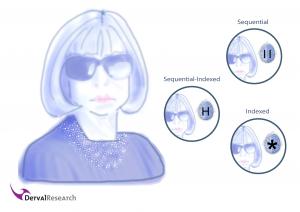DervalResearch unveils seven signs of Beauty OCD
Research suggests that beauty rituals are more determined by hormonal makeup, than by cultural or psychological aspects, and identifies beauty OCD markers.
Is it cultural? Is it psychological?
No, the reason is much deeper than that, it is physiological, according to researchers. Beauty rituals and cosmetics preferences - in particular the need for perfection and symmetry - might come down to a specific cocktail of neurotransmitters and prenatal hormones, slightly more frequent in Asian populations but also spotted among their Western counterparts.
DervalResearch investigated the complexity (in number of steps) and precision (sequence) of beauty and makeup rituals among Chinese and French women. Using non-invasive physiological measurements and lifestyle observations, the study revealed that women with a complex and precise makeup ritual, of 10 steps or more, presented a similar hormonal makeup, regardless of their country.
The findings, just presented at the 4th Asian Sensory and Consumer Research Symposium, come as a surprise as beauty rituals could be more physiological than cultural
“The complexity of beauty rituals in women seems directly linked to the levels of hormones and neurotransmitters. Cultural and psychological factors can provide some hints but studying personas physiology - their microbiome enterotype and hormonal profile - reveals a more powerful way to fully decode local beauty standards, routines, and preferences.” highlights Prof. Derval, PhD, Chair of DervalResearch, who led the research.
The author of the book Designing Luxury Brands explains further: "We observed the beauty rituals of women from Shanghai to Paris and found out that their cosmetics preferences and habits were closely linked to their hormonal makeup and microbiome. For instance, women with lower levels of estrogen could be more likely to develop what we called a beauty OCD with complex daily routines and specialized beauty products, like a day and a night cream."
According to the research, women who involve in complex beauty rituals, aim for skin perfection, thrive for symmetry, love to count the drops they apply on the skin, are into color matching, or color coordinating, and stick to design minimalism, might well be subject to beauty OCD.
The research results are expected to help cosmetics brands design the next generation of beauty products and experiences. Additional applications concern all industries having an impact on beauty and appearance such as food, health, fashion, and luxury.
The findings for Asia and Europe, as well as for Middle-East and Africa, will be detailed among other surprising sensory insights in Prof. Diana Derval’s forthcoming book The Right Sensory Mix: Decoding Customers’ Behavior and Preferences, published by Springer Nature and to be released in Spring 2022.
Prof. Diana Derval, PhD
DervalResearch
+372 602 7208
email us here
Visit us on social media:
LinkedIn
Legal Disclaimer:
EIN Presswire provides this news content "as is" without warranty of any kind. We do not accept any responsibility or liability for the accuracy, content, images, videos, licenses, completeness, legality, or reliability of the information contained in this article. If you have any complaints or copyright issues related to this article, kindly contact the author above.



